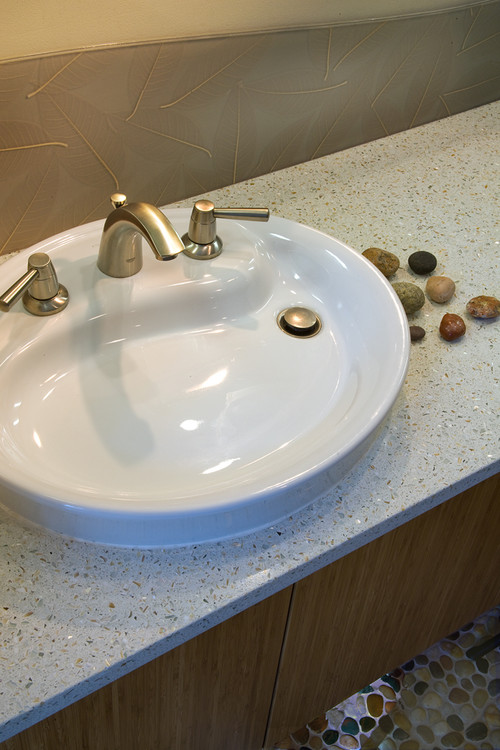Design Dilemma: Alternatives to Marble Countertops
No doubt about it, Carrerra marble countertops are gorgeous! Classic and classy, they’re also very high maintenance and easy to stain. That’s because marble is a calcareous stone composed of mostly calcium carbonate. It is extremely sensitive to acidic foods, like lemons, tomato sauce and wine, in addition to acidic cleaning products.
So are there any alternatives where you can get the look of white carrera marble without the maintenance?
Here are a few other options:
White Granite
You won’t get off scot-free with white granite. Granite is a siliceous stone composed mainly of silica or quartz-like particles. It is usually very durable and relatively easy to clean with mild acidic cleaning solutions. However, just like marble, white granite requires care and some protection, mainly in the form of a sealer applied every few months to protect from stains and acids. Use coasters under all glasses, especially drinks with alcohol or any type of citrus juice. A lot of common food and drink contain acids that can etch or dull the surface of granite. Do not place hot items directly on your countertops, use trivets or mats under hot dishes and placemats under dishes. Most importantly, seal your granite every one to two years to keep it from getting cloudy or stained due to extensive use. And if your stone takes a beating, you’re better off sealing every six months. If your granite does get stained with organic stains of coffee, tea, fruit, etc., you can remove the stain by cleaning with 12% hydrogen peroxide (hair bleaching strength) and a few drops of ammonia. If your granite gets etched by acids you can clean off any stain and re-polish the stone by sprinkling a small amount of marble polisher on the area after wetting it with water. Use a clean, dry towel to rub the powder into the stone, or you can use a buffing pad on a low speed power drill.
Quartz
Quartz, which is also known by the brand names of Silestone and Caesarstone, is one of the best options for a low-maintenance countertop that can have the veining that gives it the look of marble. Why is quartz so resistant? Because it’s engineered in a factory, where the primary ingredient is ground quartz (about 94 percent), combined with polyester resins that bind it and pigments to give it color. For some designs, small amounts of recycled glass or metallic flecks are added to the mix. The resins also help make these counters stain and scratch resistant—and nonporous, so they never need to be sealed. This gives quartz a big advantage compared to granite.
Icestone
This is a concrete material made by a company in New York called IceStone. IceStone counters use a combination of cement and recycled glass to make what is the one of the most sustainable surfaces on the market. While there is no mistaking Icestone for marble, it can come in lighter colors and retains a pleasing natural look. And you don’t have to worry about sealing, polishing or etching!
Laminate
Would you ever think that the countertop above is a laminate? Over time, laminates have become increasingly sophisticated and resemble more and more natural stones. If you can’t have the real thing and you’re concerned about maintenance, this could the best, most economical way to go!





Leave a Comment